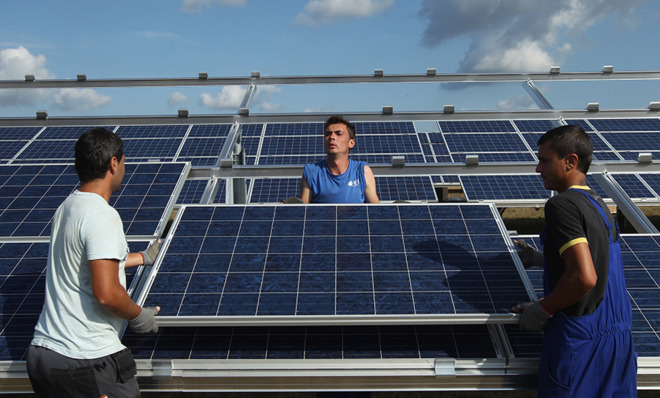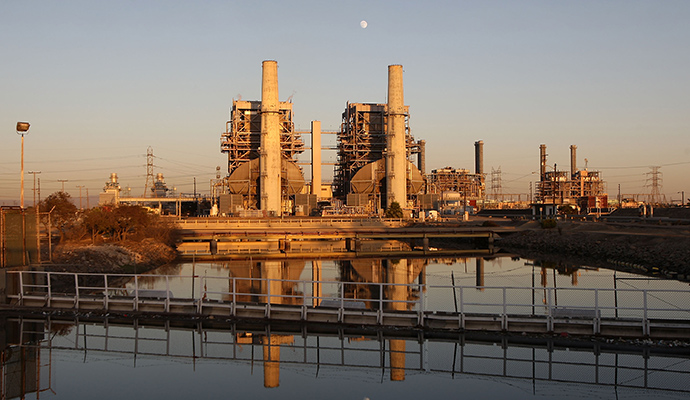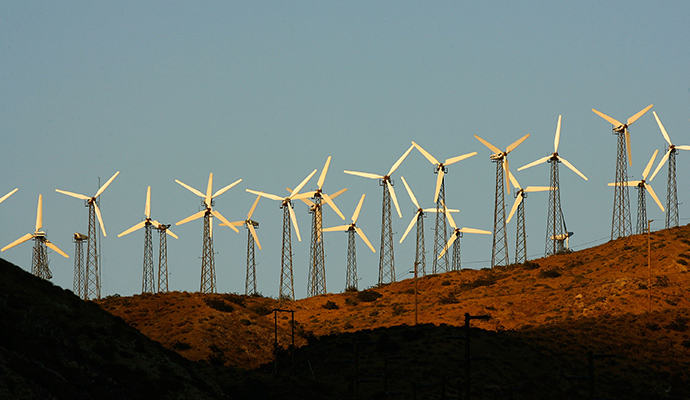The 5 most important developments in climate change in 2014
As the year comes to a close, there's more than one reason to cheer


This year may go down as one of the more consequential years for action to prevent the worst effects of climate change. I have written in the past about why fighting climate change is proving to be such a challenge, but an end-of-the-year reflection on what we are getting right might make for a refreshing change.
The good news is that while global emissions continue to grow, 2014 saw a great deal of progress toward putting in place the policies and infrastructure necessary to eventually reverse that trend. Mankind has only just begun to change its damaging course, and much more work needs to be done, but here are five reasons to be cautiously optimistic:
1. China has set a goal for peak emissions
The Week
Escape your echo chamber. Get the facts behind the news, plus analysis from multiple perspectives.

Sign up for The Week's Free Newsletters
From our morning news briefing to a weekly Good News Newsletter, get the best of The Week delivered directly to your inbox.
From our morning news briefing to a weekly Good News Newsletter, get the best of The Week delivered directly to your inbox.
China, the largest emitter in absolute terms, surprised many in the international community when it announced in November its plan to put a ceiling on greenhouse gas emissions in 2030. The agreement came in tandem with a U.S. promise to further cut its own emissions by 26 to 28 percent by 2025. Both countries also inked deals to continue cooperation on clean energy development, and China said it would double the amount of electricity it generates from non-fossil fuel sources (nuclear, hydroelectric, and solar/wind).
China's willingness to commit to a promise (albeit one that is not legally binding) breathed new optimism into the U.N. Framework Convention on Climate Change (UNFCCC) negotiations that concluded in Lima in December. The Chinese action removes a common refrain from those in the United States who do not want to move forward quickly on climate action: that what we do matters little if emerging economies are not on board.
2. The EPA's Clean Power Plan
It is unlikely that China would have been willing to promise so much without a serious commitment by the U.S., the largest per capita emitter of greenhouse gases, to reduce its own significant contribution to climate change. Thus, the biggest and most consequential domestic development in 2014 was the announcement of the EPA's rules for existing power plants, known as the Clean Power Plan (CPP). The CPP is a pledge that the U.S. will cut emissions by 17 percent below its 2005 levels by 2020.
A free daily email with the biggest news stories of the day – and the best features from TheWeek.com

The CPP faces significant challenges from Republicans in Congress, as well as from individual states, which may result in legal challenges to the EPA's authority. Beyond that, it is a complex set of rules, ultimately subject to the decisions taken by each of the 50 states, the net effect of which is difficult to forecast with certainty. Still, the CPP is likely the most practical method for mandating the kinds of transformations necessary to gradually decarbonize the U.S. economy.
3. The Green Climate Fund is working (sort of)
The Green Climate Fund was an innovation of the 2009 climate talks in Copenhagen, designed to provide developing nations with the financial resources for mitigation projects. It had received almost no pledges in its first five years. Emerging economies have long used the lack of funding as a reason for not putting forward climate pledges of their own, arguing, not without merit, that they need significant financial assistance from those countries that have a historical responsibility for global emissions growth.
This year, however, finally saw a mobilization by some of the richest nations to fulfill what is an important, even if mostly symbolic, role. As of the end of the Lima climate conference, the $10 billion benchmark had been met. (Of course, U.S. domestic politics have left its pledge blocked in Congress, but it is worth noting the fact it was made at all.) Even Australia, led by Prime Minister Tony Abbott, who is notoriously averse to climate action, eventually relented with a meager but still more-than-zero contribution.
4. Price of renewables continues to plunge
It is generally understood that robust climate change mitigation rests on making four advances: increases in energy efficiency, carbon capture and storage/sequestration (CCS) technology, nuclear power, and deployment of renewable energy. Of the last three, the reduced cost of solar and wind power have been among the best trends of the last several years. (CCS is not at the stage necessary for widespread deployment, and post-Fukushima fears about the safety and cost of nuclear power remain strong, though risk calculations differ country by country.)

In 2014, we saw this trend continue. While use of renewables is highly dependent on local circumstances, for states with abundant sun and wind, the cost of power generated from these sources is equivalent to or less than the cost of power from fossil fuels. The recent EPA power plant rules will only accelerate this trend. If fully implemented, the rules will create a stable market for technologies that eventually can transition the U.S. energy mix completely away from coal. Individual states may strengthen existing renewable standards, or adopt regional carbon markets (as California has done), which will provide incentives for utilities to expand their usage.
5. Soaring demand for green-focused financing
Energy transitions are expensive. Setting aside this current period of low crude prices, future global energy demand will cost about $48 trillion between now and 2035, according to the International Energy Agency (IEA). Not all of that spending will come from individual governments. Private investments, either through equity stakes in companies or debt financing for individual projects, are an essential feature of our global energy economy.
Thankfully, 2014 has continued the trend toward "green" bonds, which typically spur investment in things such as solar and wind technology. According to Bloomberg New Energy Finance's projections, this year's volume of green bond issuances will outpace last year's three times over, with a record $7 billion in issuances from international development banks (such as the World Bank and Asian Development Bank). While this is admittedly a small fraction of the total bond market, it does send a strong signal that more investors and institutions are interested in financing that has environmental impact, especially as government-issued debt maintains record low yields.
All these trends coming together cannot help but boost confidence that there will be momentum as we head into the Paris climate change talks in 2015, in which the global community will try to hammer out a successor to the Kyoto Protocol. The UNFCCC process still promises to be contentious, and domestic opposition to what the Obama administration is trying to do will remain strong. But 2014 will likely go down as an important benchmark year for the future.
Neil Bhatiya is a Policy Associate at The Century Foundation, where he works on issues related to U.S. foreign policy, with a specific focus on South Asia and climate change.
-
 A lemon-shaped exoplanet is squeezing what we know about planet formation
A lemon-shaped exoplanet is squeezing what we know about planet formationUnder the radar It may be made from a former star
-
 Political cartoons for January 4
Political cartoons for January 4Cartoons Sunday's political cartoons include a resolution to learn a new language, and new names in Hades and on battleships
-
 The ultimate films of 2025 by genre
The ultimate films of 2025 by genreThe Week Recommends From comedies to thrillers, documentaries to animations, 2025 featured some unforgettable film moments
